This time, we spoke with Funa Nakayama, winner of the bronze medal in the women’s street skateboarding event at the Tokyo 2020 Olympic Games, which attracted a great deal of attention as a new Olympic event. Funa, for whom expectations are high for her performance in the upcoming Paris 2024 Olympic Games following her first international competition victory at World Street Skateboarding Rome 2022, discussed the appeal of skateboarding and her goals for the future. She also offered a few of her recommendations for places to go in Tokyo.
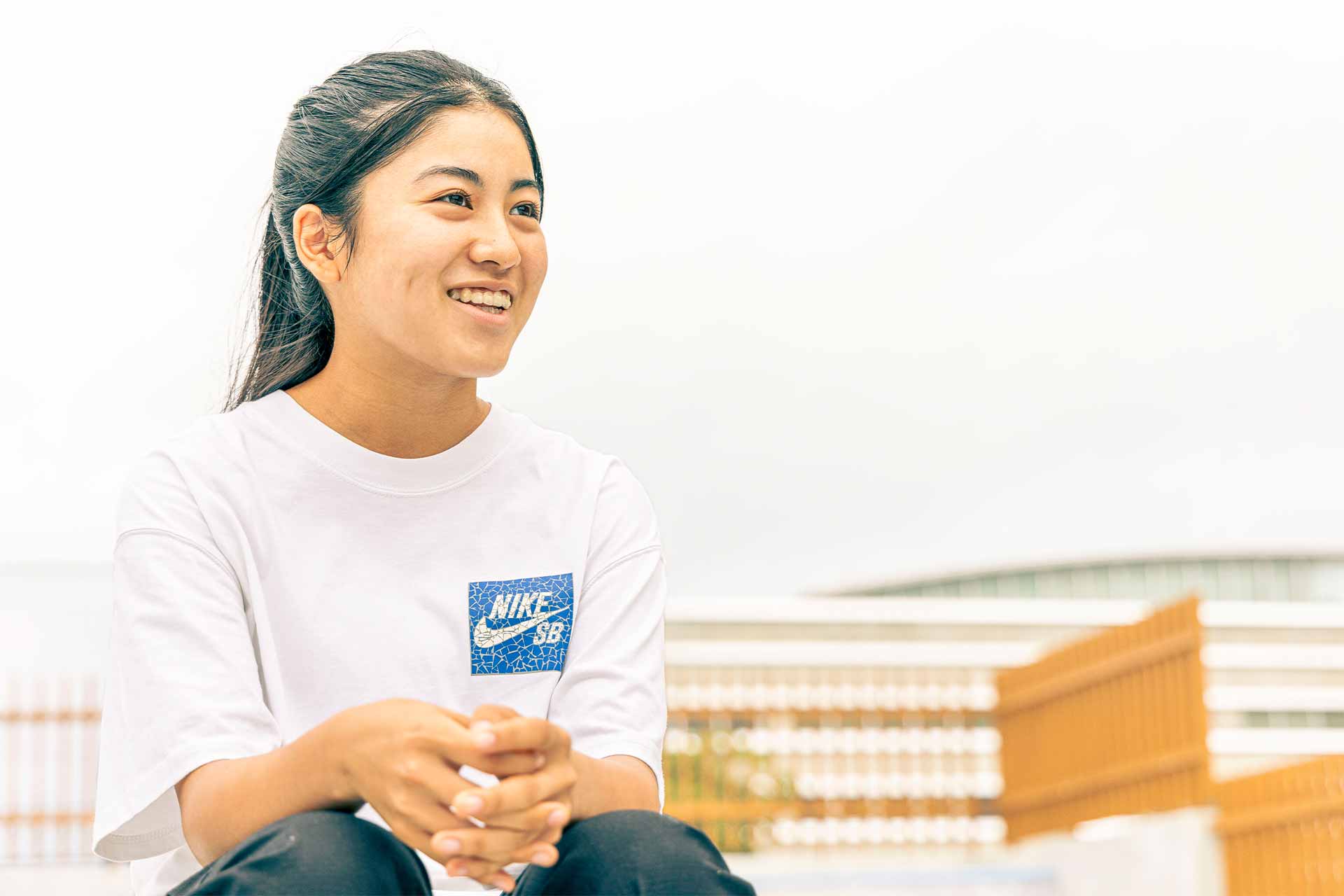
How did you get into skateboarding?
“The first time I tried skateboarding, I was in the third grade of elementary school. A skate park opened in my hometown of Toyama Prefecture, and my father took me there. My father used to skate, so he taught me, and the feeling of being on the board for the first time was a lot of fun. Of course, since it was my first time, I wasn’t able to actually ride it. I remember that I enjoyed challenging myself to do things I couldn’t do…first getting on the board, and then gradually learning to ride it from there.”
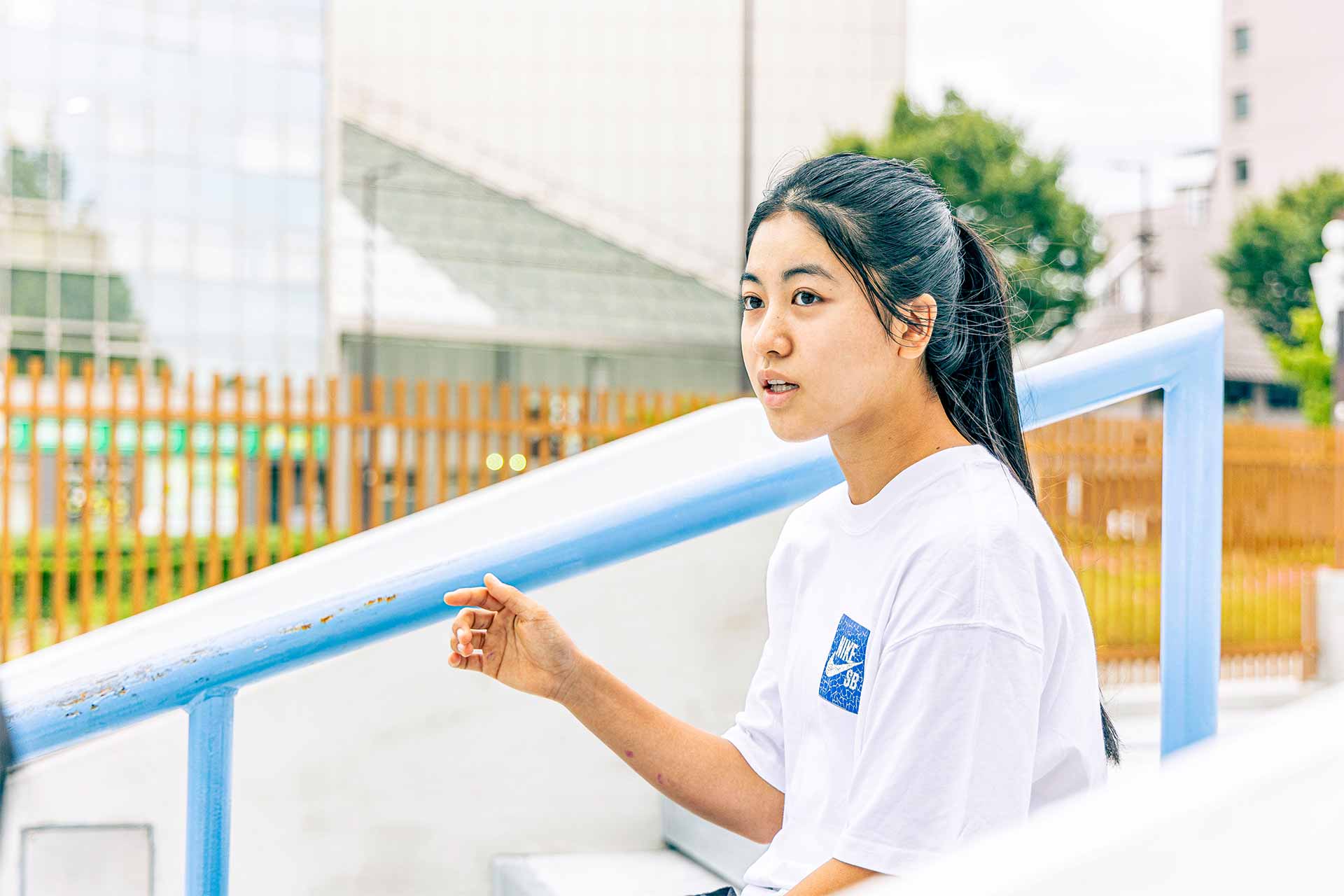
These days you can do one big trick after another, but what was the first trick you learned?
“The first trick I learned was the ollie, which is where you jump together with the deck. I started out just doing it for fun, and then I started practicing keeping my feet from coming off the board as much as I could so that my ollies could get higher over time. It took me about a year to get good at it, but by the time I was able to ollie well, I started participating in competitions and trying other tricks.”
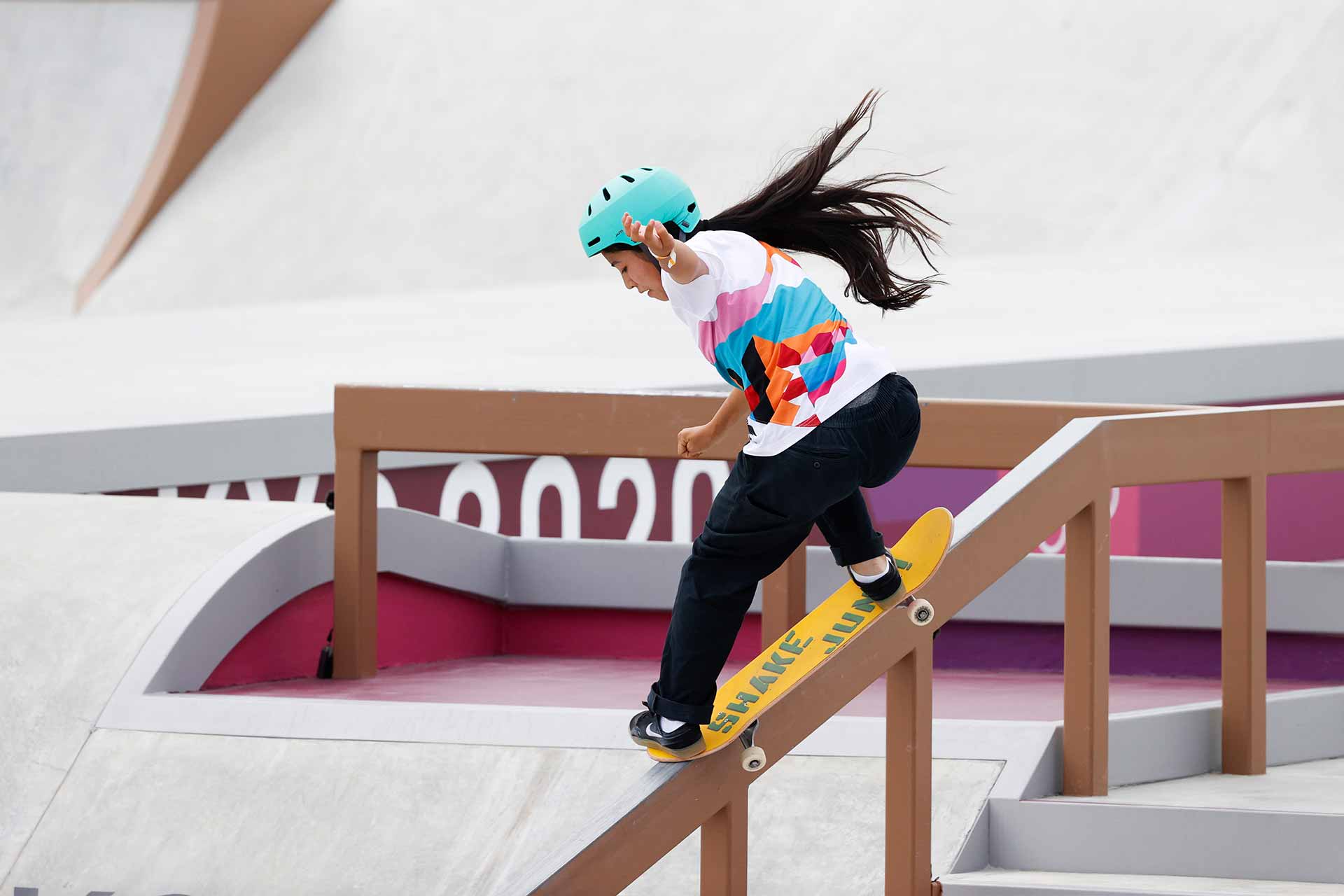
The Tokyo 2020 Olympic Games was a first not only for you, but for skateboarding. Looking back, what was your overall impression of the Olympics?
“The first thing I thought when I saw the park was that it looked difficult because all of the sections were so big and tall. For example, there was a set of stairs with a dozen steps and a rail on that, and it seemed to be difficult even for the boys. I really wondered if there were any girls that would go to that section. The main rail, in particular, was way more challenging than what I had seen in other parks abroad. But the urge to take on that challenge actually helped me focus on practicing in the runup to the Olympics.”
The result of that practice was that you successfully did a frontside K grind, an impressive trick in which the front wheels of the board slide over the rail, and you became the sport’s first Olympic bronze medalist.
“It was truly an honor to stand on the medal podium. But that said, right after it was over, I didn’t really grasp how big a deal it was to win an Olympic medal. And it wasn’t until I went back to my hometown in Toyama that I realized how heavy the medal was. A lot of people in my hometown reached out to me. Seeing everyone so happy made me really glad that I tried as hard as I did.”

Thanks to the efforts of you and the other skaters, skateboarding experienced a sudden surge in popularity.
“I’m really happy to see that new skate parks are opening all over the country and that more and more kids are getting into skateboarding. Before the Olympics, if I went to a park on a weekday, I’d almost always have the whole place to myself. Even on weekends, there would only be a few people there. But now, even on weekdays the parks are busy, and you see a lot of kids skating, too. NiX Urban Skate Park in Toyama City, which I supervised the creation of, opened in August of this year, and it’s right in front of the station, so kids can go there after school. On weekends, people even come from outside the prefecture to skate there, which is a testament to how popular skateboarding has become, even in rural areas.”
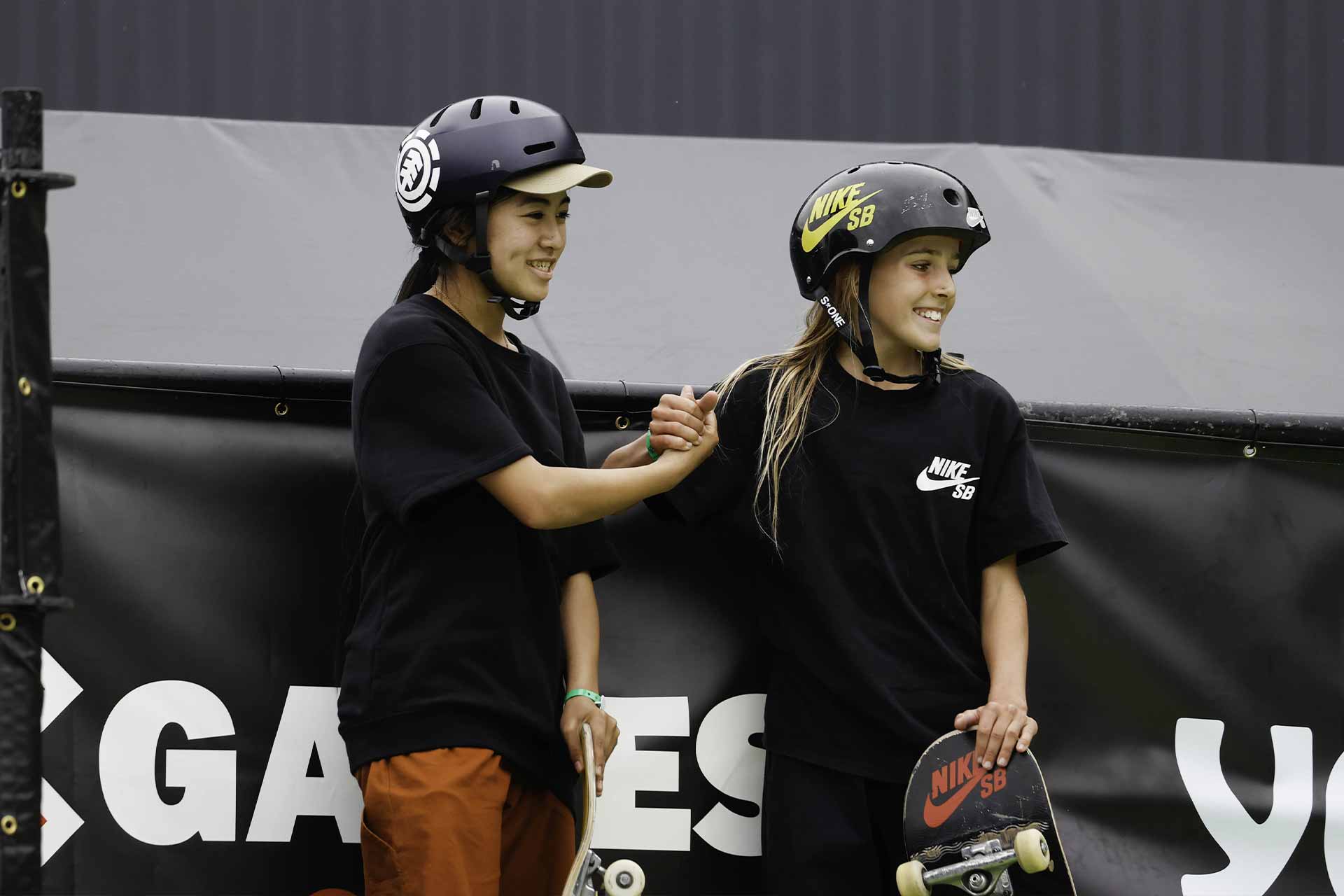
What makes you happy about your decision to keep skating?
“The best thing is that even if you don’t speak the same language, you can make friends with people just through skateboarding, and I’ve made a lot of friends that way. People that saw the skaters at the Olympics say it too, but we get along with each other really well. We follow each other on Instagram and we get excited about each other’s posts. Asking questions and also being asked about tricks is really common as well. When I ask questions, for example, I’ll ask a sensation-oriented skater about mental aspects like how they keep their spirits up, or I’ll ask a technical skater more specific things about where they look or how they open up their shoulders. We’re not so much rivals as we are just people who all love skateboarding and want to keep getting better at it.”
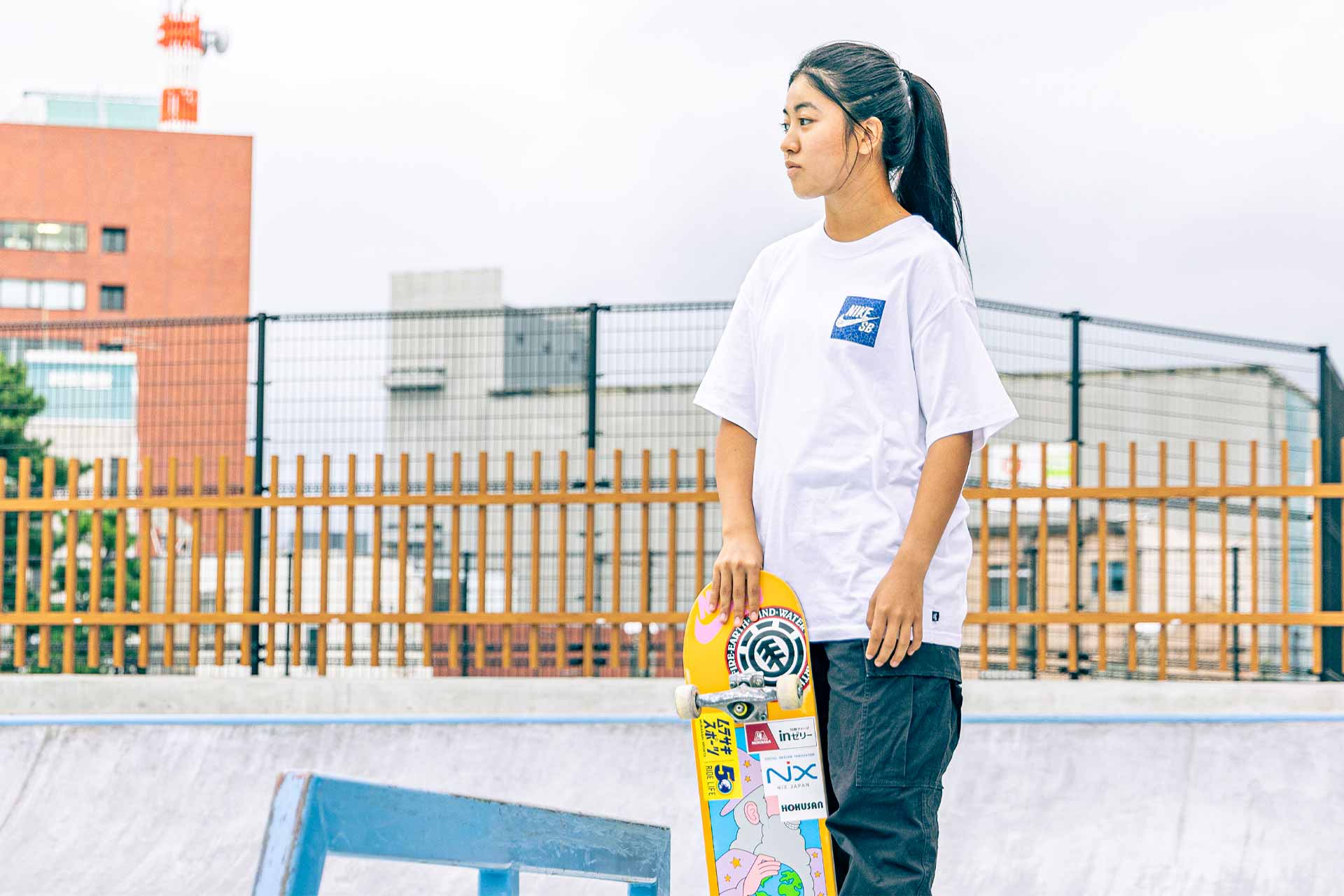
Is part of the reason you’re building each other up to prepare for the next Olympics?
“Oh, definitely. My main goals for now are to get solid results in the Olympic qualifiers and compete in the Paris 2024 Olympic Games.”

You’re a high school student in Toyama Prefecture, but you’re also active as a skateboarder and go to Tokyo for events. What aspects of Tokyo do you find appealing?
“Transportation access in Tokyo is great. Trains come every few minutes, so it’s really easy to get around if you’re going to tourist attractions or other places you want to visit. Just the other day I had a good time shopping in Harajuku, and since Meiji Jingu Shrine is just around the corner from there, I walked there to pay my respects. I was amazed at how quiet it was and how different the atmosphere was compared to Harajuku, even though it’s just a few minutes away. I think the appeal of Tokyo is that you can do a lot of different activities all in one area, like shopping, visiting shrines and temples, and so on.”

Are there any places in Tokyo that you go to often?
“I love anime, so I often visit the ONE PIECE Mugiwara Store in Shibuya and also the JUMP SHOP inside Tokyo Station. Tokyo Station is also one of my favorite spots because it sells TOKYO BANANA, which is a great souvenir that people always appreciate.”

There are a lot of skate parks in Tokyo, but if you could recommend one, which one would it be?
“My recommendation would be MURASAKI PARK TACHIKAWA TACHIHI, which opened in Tachikawa City in the summer of this year. It’s not only an outdoor park, but also an indoor park as well. The indoor park has an area of 956.25m2 and it’s fully climate-controlled. If I were to take skaters from abroad there, they absolutely would love it. The outdoor park has vertical ramps as tall as the ones used in international competitions, and there’s also a flat space where beginners can skate with confidence, so it’s got something for everyone, from skaters who are just starting out to pro-level skaters. Please check it out if you have the chance. I’m sure you’ll enjoy it!”
<Profile>
NAKAYAMA Funa
Born in 2005 and raised in Toyama Prefecture. Began skateboarding seriously at the age of nine. Placed 6th at the 2021 Street Skateboarding World Championships held in Rome in June 2021 and was selected to represent Japan in the Olympics. At the Tokyo 2020 Olympic Games, finished in 1st place in the preliminary round and went on to win the bronze medal. Won her first international competition in July 2022 at World Street Skateboarding Rome 2022. In November, she became the first Asian woman to appear on the cover of the skateboarding magazine Thrasher Magazine, and she is currently a top skater garnering attention from around the world.